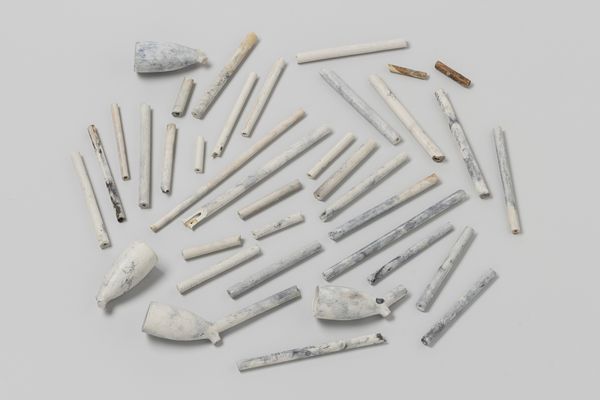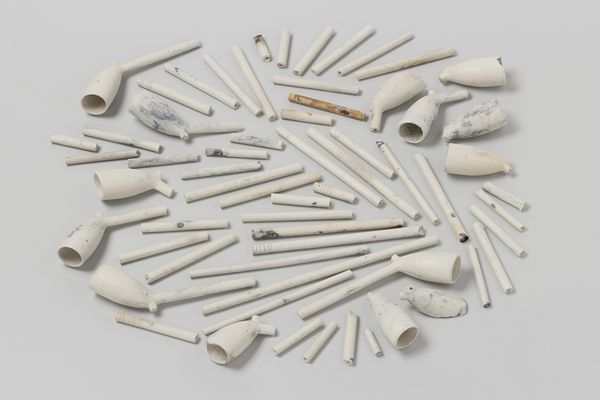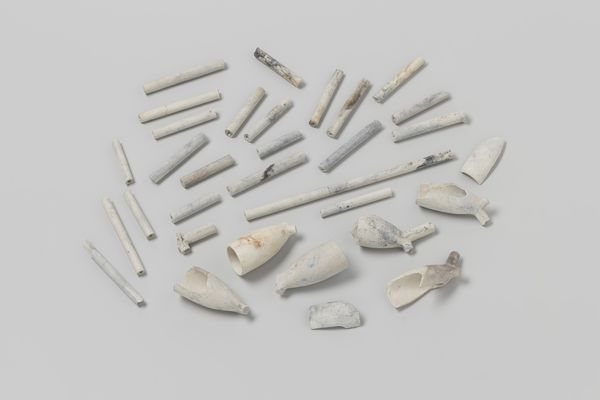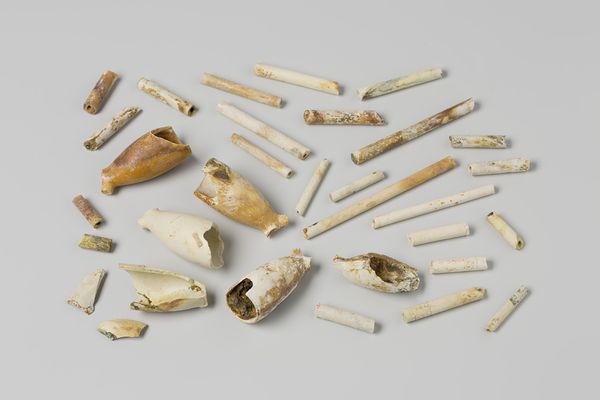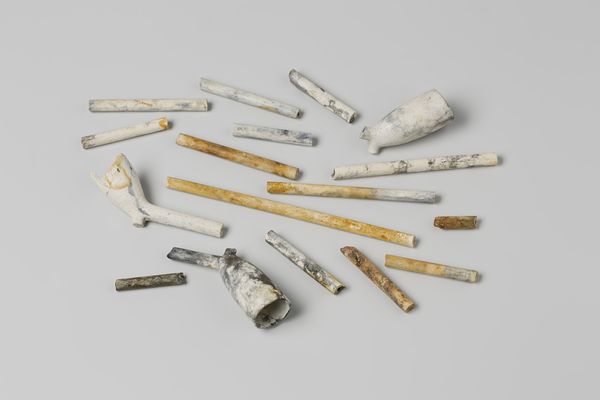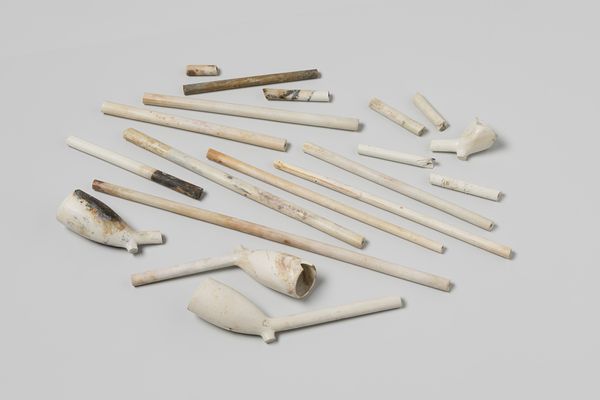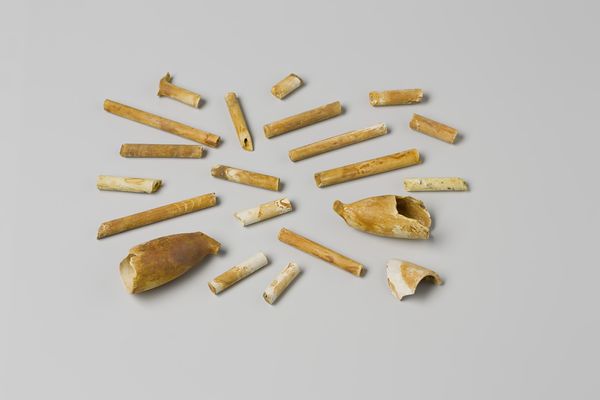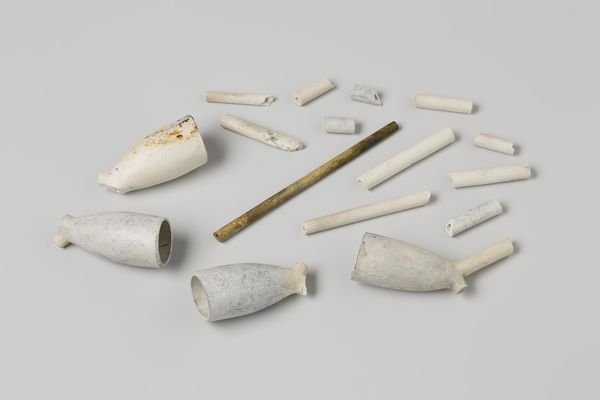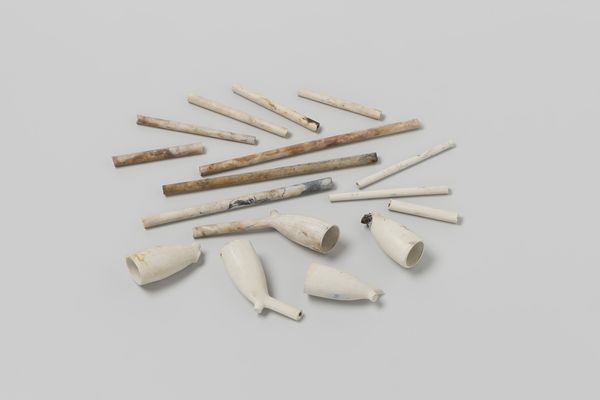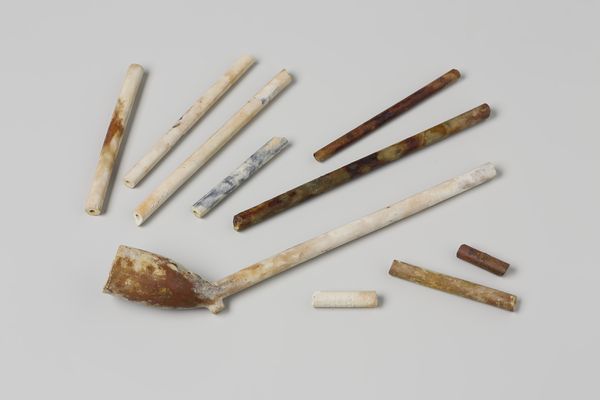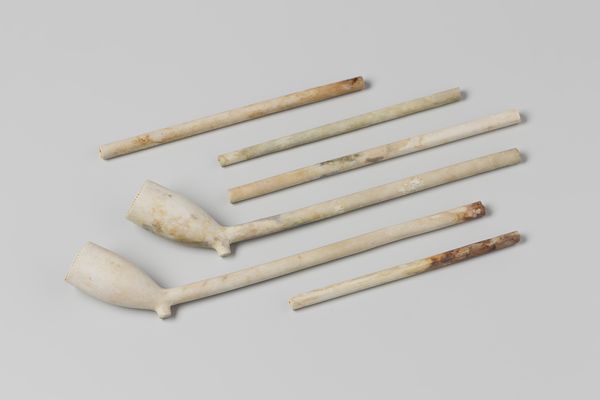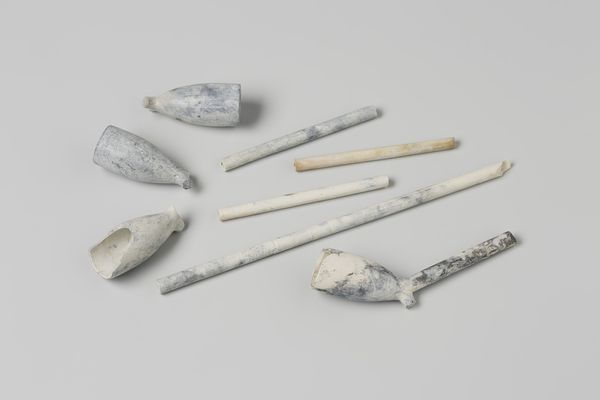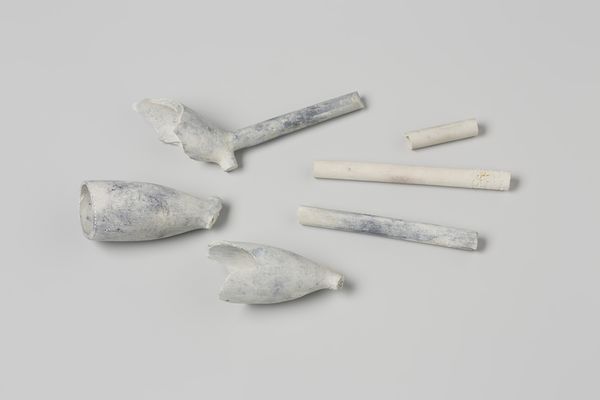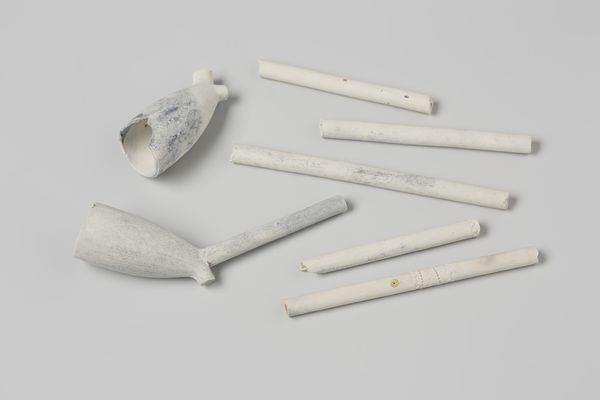
Fragmenten van pijpen en pijpenstelen uit het wrak van de Oost-Indiëvaarder 't Vliegend Hart Possibly 1700 - 1735
0:00
0:00
ceramic, earthenware
#
baroque
#
dutch-golden-age
#
ceramic
#
earthenware
#
stoneware
Dimensions: length 14.6 cm, width 1.9 cm, depth 3.8 cm, length 2.6 cm, diameter 0.6 cm
Copyright: Rijks Museum: Open Domain
Editor: This intriguing collection, entitled "Fragments of Pipes and Pipe Stems from the Wreck of the East Indiaman 't Vliegend Hart," dates possibly from 1700 to 1735. They appear to be made of earthenware. I’m immediately struck by their fragile state and what feels like a tangible link to the past. What do these fragments tell you? Curator: As a materialist, I see more than just broken pipes. Each fragment whispers of labor – the hands that shaped the clay, the fires that hardened it, and the trade routes that carried it. These aren’t just objects; they're remnants of a complex social and economic system tied to Dutch maritime power. The 't Vliegend Hart was carrying cargo. These pipes are signs of emerging consumerism on trade routes. Editor: Consumerism? I wouldn’t immediately make that connection. Curator: Consider the ubiquity of tobacco in the 18th century. Smoking wasn’t merely a personal habit but a social ritual fueled by colonial expansion and forced labor. These pipes, even in their broken state, speak to that exploitative structure. It highlights the cost. The pipe's creation, use, and then loss via shipwreck underscore interconnectedness of manufacture, global trade, and individual consumption, even in the face of disaster. Editor: That's a powerful interpretation. It reframes them, almost like remnants of a cautionary tale about the human cost of luxury. Curator: Precisely! Their very fragmentation becomes significant. These fragments disrupt any sense of complete narrative, forcing us to confront the messy realities of history and question the human impact involved in the production. Editor: I never thought about pipes this way. Seeing them as byproducts of larger economic systems… It’s made me reconsider the story that everyday objects can tell. Curator: That’s the essence of looking at material culture, examining how things are more than they seem. They show material process as related to economic trade-offs.
Comments
No comments
Be the first to comment and join the conversation on the ultimate creative platform.
